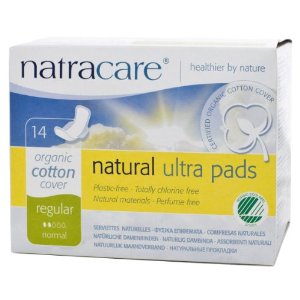
|
|||||
|---|---|---|---|---|---|

|
|||||
Popular Articles: |
CITY-TV in Toronto interviewed Liz Armstrong and Adrienne Scott from Women and Environments Education and Development Foundation (WEEDS).

Silent Spring |
The topic dealt with the lack of co-operation from the large corporations in North America to produce safe
feminine hygiene products. Current manufacturing processes involve using chlorine bleaching to ensure whiter than white products.
Chlorine bleaching creates dioxins, the most toxic, carcinogenic chemicals known. Add to this synthetic super absorbable materials that trap liquids and are notorious for resisting natural decomposition. These dioxin-laden sanitary
products wind up in our water systems and become a toxic time-bomb in landfill sites.
With unit sales of pads, shields and tampons in excess of two billion, the corporate giants are reluctant to make any costly manufacturing changes. As a matter of fact, even though they seem to be aware of the dangers, no changes will be made in the foreseeable future according to companies contacted.
Women's groups advocate using rewashable protection to save the environmental impact of throwaways. If this does not appeal to you, it's nice to know there are natural products available as an alternative, such as Natracare.
A group of dedicated business-women in Britain have spearheaded the manufacture of environmentally friendly feminine hygiene products. The pulp used in the pads and shields are from the Korsnas mill in Sweden, which has the highest standard of forest management in the world. Korsnas was the first to stop using chlorine bleaching. The tampons contain 100% first grade cotton grown in Pakistan where there is strict adherence to the U.S. standards for pesticide control. Independent studies have also shown these tampons have less fibre loss than other tampons, thus reducing the risk of toxic shock. Natracare uses oxygen bleaching.
Thank goodness these environmentally friendly products are available in Canada. If you are concerned about saving the environment, but the thought of using rewashable protection does not appeal to you, isn't it comforting to know that you have another choice?

Natracare feminine pads and tampons |
QUESTION: How does Natracare differ from the other products on the market?
ANSWER: They are unique for several reasons. We will list the most vital.
(1) All the major brands use the chlorine bleaching process to whiten their products. This process leaves minute quantities of toxic dioxins (a by-product of this process) in the product. Natracare uses hydrogen peroxide as a whitener and guarantees their products to be dioxin-free.
(2) Natracare tampons, unlike the major brands, contain no rayon fibres. Rayon has been traced as the probable cause of Toxic Shock Syndrome, and also give rise to fibre loss which can cause ulceration of the vagina.
QUESTION: I am severely allergic to chemicals, perfumes and various surface residues in feminine products? How safe are Natracare?
ANSWER: They contain no surface irritants, no deodorants, no perfumes, no radiation residue, no known irritants. The tampons are 100% cotton with no rayon fibres. The pads are fluff pulp from Sweden, no chemicals. The only item that could, if completely saturated, pose a potential problem is the slender pads, that have super-absorbent granules in the pulp to increase absorbency and should therefore not be used with extremely sensitive individuals.

Whitewash: Exposing the Health and Environmental Dangers of Women's Sanitary Products and Disposable Diapers |
QUESTION: How sterile are Natracare products?
ANSWER: They are produced under sterile conditions. The only way to guarantee a product is 100% sterile
is to package it, seal it airtight and irradiate the package. This is, of course, only a temporary measure since once the seal is broken, the contents are exposed to unsterile conditions such as air and handling. At best, this is a sales gimmick with no benefit to the user, and in the process exposes products and the end user to irradiated materials.
A U.S. congressional panel has accused the F.D.A. of ignoring the dangers to women from tampons that contain toxic dioxins! Internal F.D.A. documents suggest the agency does not adequately investigate the danger of dioxins in tampons.
An F.D.A. scientist, Melvyn Stratmeyer was quoted as saying, Even if it (dioxins) were present, it would likely be below levels requiring action.
Quote from Globe and Mail, Friday June 12/92.
It was reported on radio news that a leading senator, in response to Mr. Stratmeyer's statement was quoted as having fumed There is no level of dioxins that is acceptable
!
Read the book Whitewash
by Liz Armstrong and Adrienne Scott. Use cloth menstrual pads, sea-silk tampons or dioxin-free menstrual products, such as Natracare feminine hygiene products.
This article compliments of Born to Love.
• Online Resources
• Books to Read
• Charting Cycles
• Articles
• Discussion Lists
• Make-Your-Own
• Menstrual Products and Health
• Feminine Ecology Notes
• Women Taking the Initiative for a Safer Environment
• Fast Facts from Whitewash
• Backgrounder: What Are Organochlorines? And Why Are They So Dangerous?
• What Women Can Do to Stop the Whitewash
• More On-line Articles
Send questions, comments, and suggestions to: catherine@borntolove.com
Born to Love articles are written by Catherine McDiarmid-Watt
Born to Love is a participant in the Amazon Services LLC Associates Program, an affiliate advertising program designed to provide a means for sites to earn advertising fees.
NOTE: All logos, company names, brands, images, trademarks and other intellectual property are the property of their respective owners.
Born to Love is a participant in the eBay Partner Network, an affiliate advertising program designed to provide a means for sites to earn advertising fees by advertising and linking to eBay.com.
Copyright © 1978 - BorntoLove.com - All Rights Reserved.
Last updated - April 5, 2024